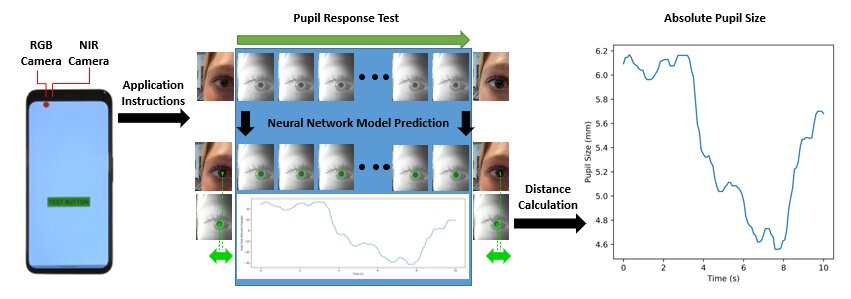Eye-catching smartphone app could make it easy to screen for neurological disease at home.
Researchers at the University of California, San Diego, have created a smartphone app that may be used to screen for Alzheimer’s disease, ADHD, and other neurological diseases and disorders by taking close-ups of the eyes.
The program tracks how a person’s pupil changes in size using a near-infrared camera, which is included in modern smartphones for facial identification, as well as a standard selfie camera. These pupil measurements could be used to evaluate a person’s mental health.
The technique will be presented in a presentation at the ACM Computer-Human Interaction Conference on Human Factors in Computing Systems (CHI 2022), which will be held as a hybrid-onsite event in New Orleans from April 30 to May 5.
While there is still a lot of work to be done, I am excited about the potential for using this technology to bring neurological screening out of clinical lab settings and into homes
said Colin Barry, an electrical and computer engineering Ph.D. student at UC San Diego and the first author of the paper, which received an Honorable Mention for Best Paper award
We hope that this opens the door to novel explorations of using smartphones to detect and monitor potential health problems earlier on

According to new research, the size of a person’s pupils can provide information about their neurological processes. When a person accomplishes a tough cognitive task or hears an unexpected sound, for example, their pupil size expands.
A pupil response test is used to determine how much the pupil diameter changes over time. The test could provide a quick and painless method of diagnosing and monitoring a variety of neurological diseases and disorders. It does, however, necessitate specialized and expensive equipment, making it impractical to perform outside of a lab or clinic.
Engineers in the Digital Health Lab worked with researchers at the UC San Diego Center for Mental Health Technology (MHTech Center) to build a more inexpensive and accessible solution, led by UC San Diego electrical and computer engineering professor Edward Wang.
“A scalable smartphone assessment tool that can be used for large-scale community screenings could facilitate the development of pupil response tests as minimally-invasive and inexpensive tests to aid in the detection and understanding of diseases like Alzheimer’s disease. This could have a huge public health impact,”
said Eric Granholm, a psychiatry professor at UC San Diego School of Medicine and director of the MHTech Center.
The UC San Diego team’s program detects a person’s pupil using a smartphone’s near-infrared camera. Even in eyes with darker iris hues, the pupil may be easily distinguished from the iris in the near-infrared range. As a result, the software can compute pupil size with sub-millimeter precision across a wide range of eye colors. The app also captures the stereoscopic distance between the smartphone and the user using a color selfie captured with the smartphone’s selfie camera. The software then converts the pupil size from the near-infrared image to millimeter units using this distance.
The app’s measurements were comparable to those taken by a device called a pupillometer, which is the gold standard for measuring pupil size.
The researchers also included various features in their app to make it more user-friendly for older adults.
“For us, one of the most important factors in technology development is to ensure that these solutions are ultimately usable for anyone. This includes individuals like older adults who might not be accustomed to using smartphones,”
said Barry
The researchers collaborated with older adults to create a simple app interface that allows users to undertake pupil response tests on their own. Voice commands, image-based directions, and a cheap, plastic scope to direct the user to place their eye within the view of the smartphone camera were all part of the interface.
“By testing directly with older adults, we learned about ways to improve our system’s overall usability and even helped us innovate older adult specific solutions that make it easier for those with different physical limits to still use our system successfully,”
said Wang, who is also a faculty member in the UC San Diego Design Lab
“When developing technologies, we must look beyond function as the only metric of success, but understand how our solutions will be utilized by end-users who are very diverse.”
The Digital Health Lab is working on a project to make similar pupillometry functions available on every smartphone, not just the latest ones. Future research will include working with older folks to assess how they use technology at home. The researchers will use older people with modest cognitive impairment to test the app as a risk screening tool for Alzheimer’s disease in its early stages.
Source: University of California / Medical Express

